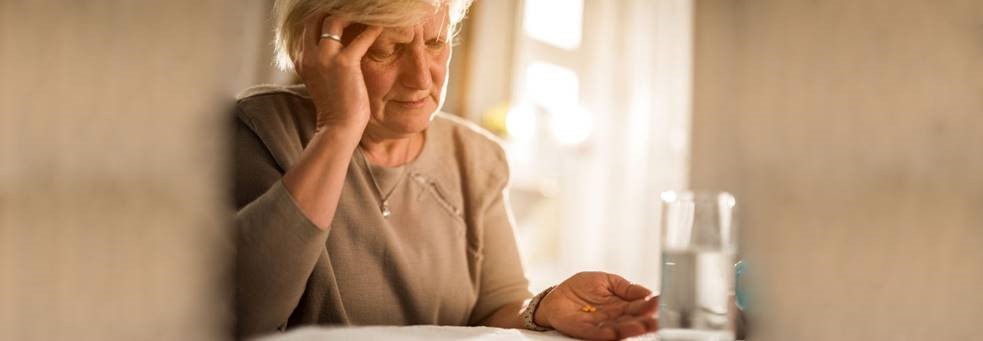Americans In Pain and Addicted: Untangling the Opioid Crisis
- Home
- Blog

Part Five: Finding Something to Live For
“But it was the only thing that helps, Doc. If you were in this type of pain, you would understand and wouldn’t ask me to wean off it despite whatever the science said.” Kate was a sweet 74 year old female in a decade-long fight against fibromyalgia and chronic migraine headaches; she was a proud mother of three and grandmother of five; and she was addicted to opioids. Last week, I shared with you the harrowing descent toward rock bottom—and the painstaking journey toward recovery—of a young woman named Margo. To many of us, the elements of that story—mental illness, an accidental pregnancy, homelessness and prostitution— fit well within what we imagine a “user” to be. In that blog, I hoped to humanize Margo and show you how quickly, and to what depths, one can fall when they’re not supported—and how far compassion can go when it comes to healing deep wounds. In this next blog, I hope to shed light on the opposite end of the addiction spectrum by telling you the story of Kate, a kindly grandmother who had a lot of love in her life, who hit her own version of rock bottom when she realized her life had been reduced to a pill with enormous power over her.
Kate was a patient of my good friend, Dr. Sloane Yu, a pain medicine specialist currently at Dartmouth. “As a pain medicine physician, we are often the doctors our colleagues consult when patients’ opioid use is getting out of control”, he commented to me. “Pain sucks for so many reasons, and no doctor wants to leave his patient in pain. The purpose of my work is to deliver the best that medicine and science have to offer against pain. And the science is becoming clearer: In Kate’s case, for instance, opioids do not help with chronic pain management of fibromyalgia, chronic headaches, and other types of pain. But all the studies and evidence in the world can’t change the experience of having a patient in front of you who is so visibly suffering.”
With Kate, Dr. Yu’s work was cut out for him: large population-based studies of chronic migraines suggest that opioid use is associated with more severe symptomatology, the development of other medical conditions, and disability. And yet, here in front of him was a sweet elderly patient who was suffering from extreme pain. The way Dr. Yu proceeded is an example of how doctors everywhere can begin to effectively grapple with our opioid epidemic.
Kate had come to terms with her own rock bottom when her three adult children planned an intervention for her, in which they tearfully explained how worried they were at the way her personality had devolved over time. Her oldest son, who attended Kate’s first appointment with Dr. Yu, described her constant push for doctors to prescribe her more and more opioids. “She is just zonked out all the time”, he explained. “This isn’t the same amazing woman that raised me. This isn’t the woman I want my kids to know.” It was the look in her children’s eyes that convinced Kate something must be done. They began to rapidly taper her opioid medication and build a treatment plan that would help Kate see a brighter future. Dr. Yu set out to treat Kate’s pain holistically. This action plan needed to include solutions to her fibromyalgia pain and her chronic headaches—but also needed to assist Kate in finding activities to fill the void opioids can leave in a patient’s lifestyle. Opioids are meant to not only kill pain but to increase endorphins, so he advised Kate to fill her life with activities that would help her body get back to producing those mood-lifting, euphoric endorphins naturally.
At his previous institution, Stanford University Medical Center, Dr. Yu had helped to pioneer the use of a new formulation of an old medication called low-dose naltrexone. This drug is actually an “anti-opioid” and has little known side effects. It’s also been shown to be effective against fibromyalgia pain. Kate took well to the drug. For her chronic migraines, Dr. Yu pointed her toward other proven treatments such as Botox injections and transcutaneous supraorbital neurostimulation. Most importantly, Kate began to exercise daily and play with her grandkids—proven quality-of-life activities that can make all the difference in addiction treatment.
Dr. Yu spoke to Kate two weeks after she was completely off opioids. She sounded like a whole new woman. “Kate told me that while the pain was still there, it didn’t bother her as much because her quality of life was so much better. She now had the energy to host family dinner parties, and even to make her famous clam chowder. She felt connected to family once again and life had purpose outside of pain. I was so excited with how far she had come, and for the opportunity to continually fine tune our treatment approach together.”
At one end of the addiction spectrum is Margo: someone whose life seemed such a mess that she had to numb herself to make it through the day. At the other end, is Kate: someone whose life was by all measures joyful, but addiction had cloaked it in shadows. Medication and other forms of treatment for both patients had to be specific to their own individual needs—but their stories of recovery are woven together by a crucial thread: Empathy. Medication can help, but it is compassion and understanding that give those who suffer from addiction the reason to work toward recovery.
Well on her way to a full life once again, Kate told Dr. Yu: “Chronic pain and addiction are a life-long struggle, and it can humble even the proudest and strongest person. As difficult as it may be, you can’t let your suffering define you and control you. Something, anything, needs to be more important.”
Psychiatrists can help patients find that “something”.
Special thanks to Dr. Sloane Yu for sharing his patient story. Names and Identifying details have been changed to protect the identity of the patient.

